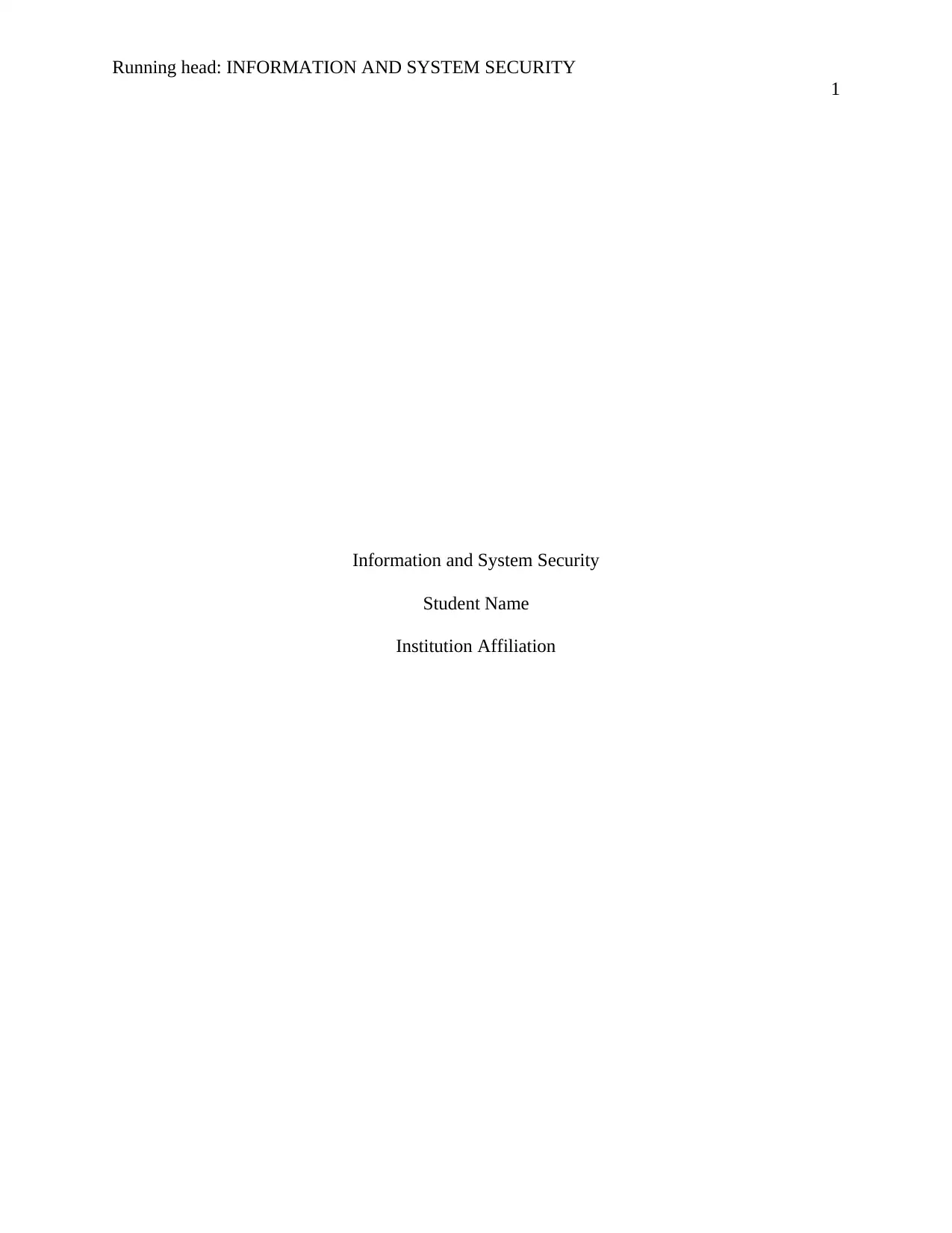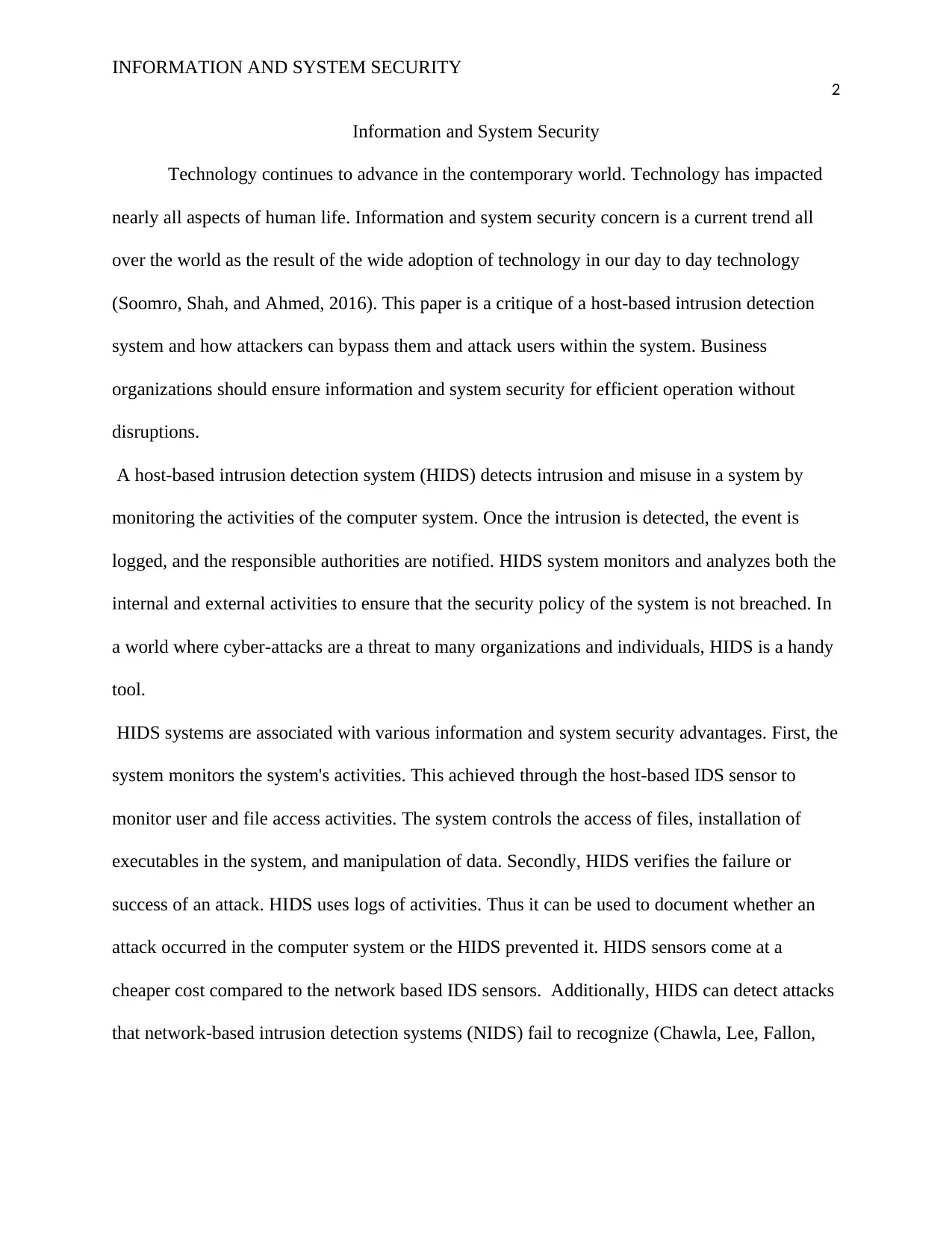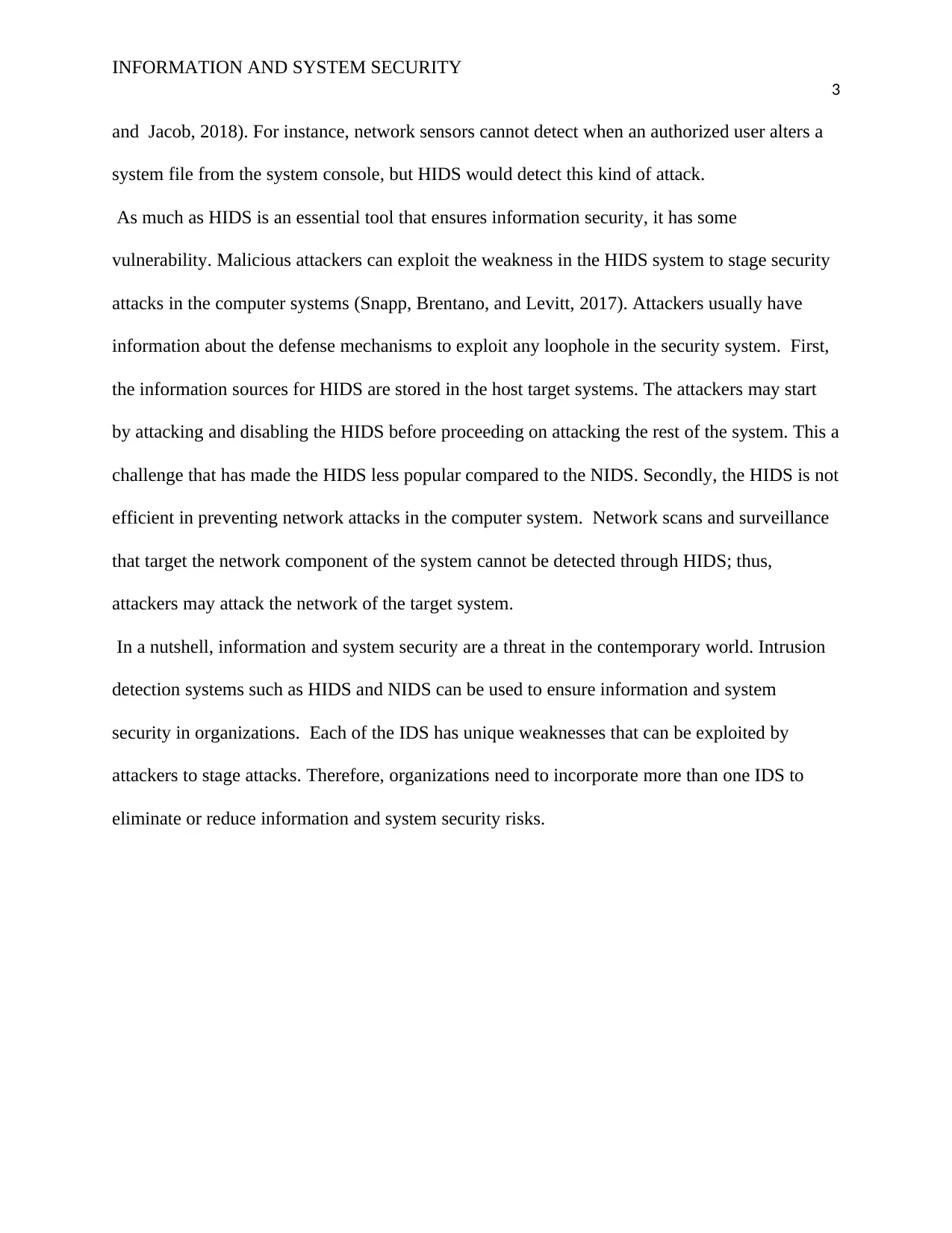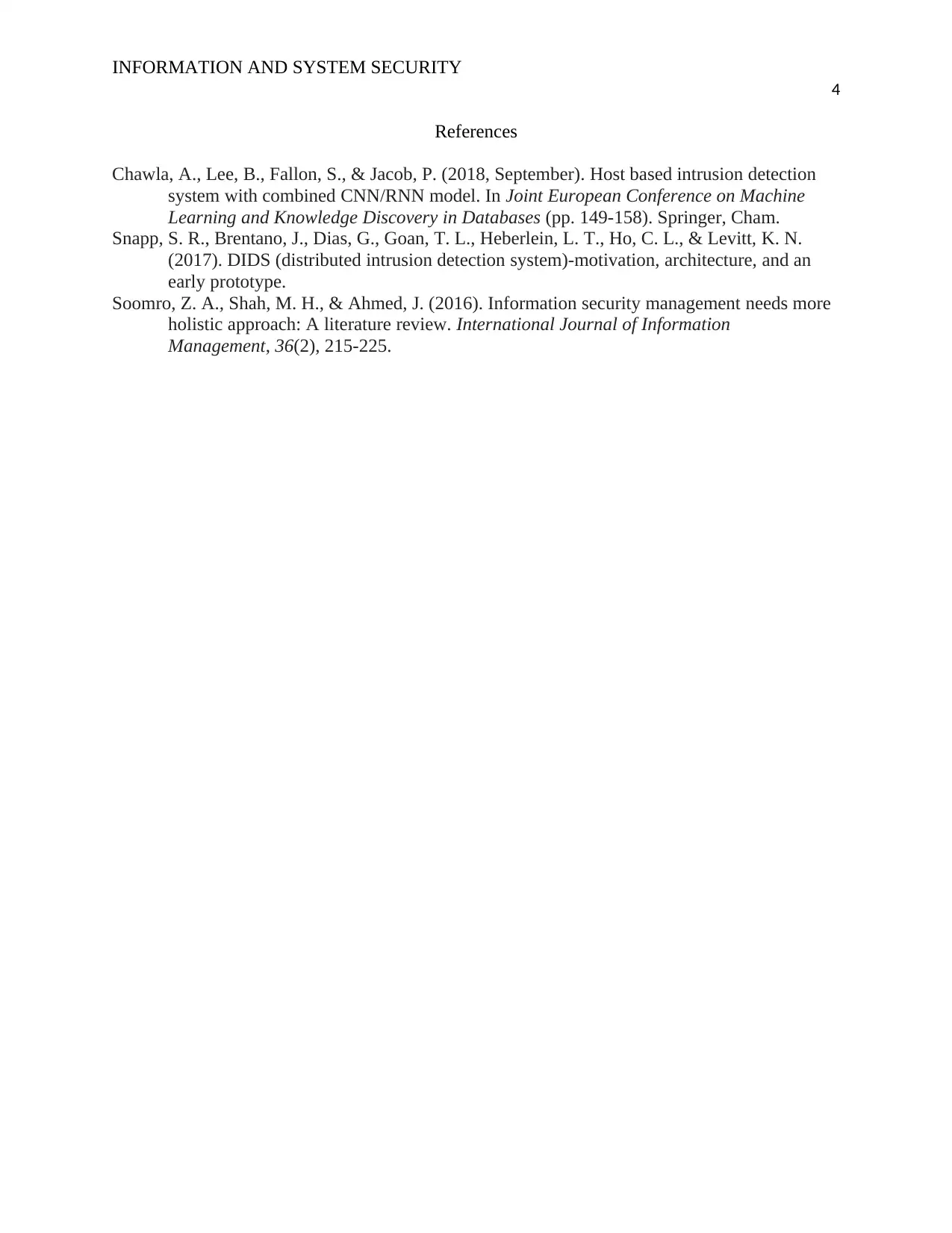Analysis of Information and System Security: HIDS Vulnerabilities
VerifiedAdded on 2022/10/04
|4
|765
|7
Report
AI Summary
This report provides a critique of Host-Based Intrusion Detection Systems (HIDS) in the context of information and system security. It begins by defining HIDS and its role in monitoring system activities to detect intrusions, highlighting its advantages such as monitoring system activities, verifying the success or failure of an attack, and lower cost compared to Network-based IDS (NIDS). The report then delves into the vulnerabilities of HIDS, explaining how attackers can exploit weaknesses to stage security attacks, such as disabling the HIDS before attacking the rest of the system or attacking the network components. The report emphasizes the need for organizations to incorporate multiple intrusion detection systems to mitigate information and system security risks, concluding that a combined approach is crucial to enhance overall security posture.
1 out of 4










![[object Object]](/_next/static/media/star-bottom.7253800d.svg)